![Top 15 Data Science Projects in Python [with Source Code] 1 Post thumbnail](https://www.guvi.in/blog/wp-content/uploads/2024/07/Feature-Image-1-1.png)
Top 15 Data Science Projects in Python [with Source Code]
Sep 20, 2024 5 Min Read 17828 Views
(Last Updated)
Data science is revolutionizing the way we understand and interpret data, providing critical insights that drive decision-making across industries. At the heart of this revolution is Python, a versatile and powerful programming language renowned for its simplicity and extensive library support. Working on practical projects is an amazing way to hone your skills and deepen your understanding.
In this blog, we will explore the top 15 data science projects in Python, complete with source code. These projects span a range of applications—from sentiment analysis and image classification to stock price prediction and fraud detection. Each project is designed to tackle real-world problems, offering hands-on experience and valuable learning opportunities. Let’s begin!
Table of contents
- What is Data Science?
- Top 15 Data Science Projects in Python [with Source Code]
- Project 1: Sentiment Analysis
- Project 2: Image Classification
- Project 3: Stock Price Prediction
- Project 4: Customer Segmentation
- Project 5: Fraud Detection
- Project 6: Recommender System
- Project 7: House Price Prediction
- Project 8: Chatbot Development
- Project 9: Handwritten Digit Recognition
- Project 10: Breast Cancer Detection
- Project 11: Time Series Forecasting
- Project 12: Social Media Analysis
- Project 13: Real-time Object Detection
- Project 14: Predicting Employee Attrition
- Project 15: Credit Card Default Prediction
- Conclusion
- FAQs
- What are the essential libraries for a Python-based Data Science project?
- How do you handle missing data in a dataset using Python?
- What are some popular machine learning algorithms implemented in Python for Data Science?
What is Data Science?
Data Science is an interdisciplinary field that uses scientific methods, processes, algorithms, and systems to extract knowledge and insights from structured and unstructured data. It combines elements from various disciplines, including:
- Statistics
- Mathematics
- Computer Science
- Information Science
- Domain expertise
Key aspects of Data Science include:
- Data collection and cleaning
- Exploratory data analysis
- Machine learning and predictive modeling
- Data visualization and communication
Data Scientists use these skills to solve complex problems, make data-driven decisions, and create AI systems.
Before we move into the next section, ensure you have a good grip on data science essentials like Python, MongoDB, Pandas, NumPy, Tableau & PowerBI Data Methods. If you are looking for a detailed course on Data Science, you can join GUVI’s Data Science Course with Placement Assistance. You’ll also learn about the trending tools and technologies and work on some real-time projects.
Additionally, if you want to explore Python through a self-paced course, try GUVI’s Python course.
![Top 15 Data Science Projects in Python [with Source Code] 2 Data Science Projects](https://www.guvi.in/blog/wp-content/uploads/2024/08/Image-1-1-1-1200x600.png)
After understanding data science, let’s explore the top 15 data science projects in Python, each with source code.
Top 15 Data Science Projects in Python [with Source Code]
Let’s explore 15 diverse and impactful Data Science projects in Python. To kickstart your data science journey, find out how long it would take to learn the essential skills!
Project 1: Sentiment Analysis
Sentiment analysis is a fundamental task in Natural Language Processing (NLP) that involves determining the emotional tone behind a piece of text. This project focuses on analyzing customer reviews to classify them as positive, negative, or neutral.
Key Concepts:
- Text preprocessing (tokenization, stemming, lemmatization)
- Feature extraction (TF-IDF, word embeddings)
- Machine learning classifiers (Naive Bayes, Support Vector Machines)
- Deep learning models (LSTM, BERT)
Implementation: The project uses the NLTK library for text preprocessing and scikit-learn for implementing machine learning models. For more advanced implementations, you can explore deep learning frameworks like TensorFlow or PyTorch.
Source Code: Sentiment Analysis
![Top 15 Data Science Projects in Python [with Source Code] 3 Data Science Projects](https://www.guvi.in/blog/wp-content/uploads/2024/08/Image-2-1-1-1200x600.png)
Project 2: Image Classification
Image classification is a cornerstone of computer vision, with applications ranging from autonomous vehicles to medical diagnosis. This project involves building a model to classify images into predefined categories.
Key Concepts:
- Convolutional Neural Networks (CNNs)
- Transfer learning
- Data augmentation
- Model fine-tuning
Implementation: The project utilizes popular deep learning frameworks like TensorFlow or PyTorch. It demonstrates how to build a CNN from scratch and how to use pre-trained models like ResNet or VGG for transfer learning.
Source Code: Image Classification
![Top 15 Data Science Projects in Python [with Source Code] 4 Data Science Projects](https://www.guvi.in/blog/wp-content/uploads/2024/08/Image-3-2-1-1200x600.png)
Project 3: Stock Price Prediction
Predicting stock prices is a challenging yet fascinating application of machine learning in finance. This project aims to forecast future stock prices based on historical data and other relevant features.
Key Concepts:
- Time series analysis
- Feature engineering
- Regression models (Linear Regression, Random Forest)
- Evaluation metrics (RMSE, MAE)
Implementation: The project uses pandas for data manipulation, matplotlib for visualization, and scikit-learn for implementing machine learning models. It also explores more advanced techniques like ARIMA and LSTM networks for time series forecasting.
Source Code: Stock Price Prediction
![Top 15 Data Science Projects in Python [with Source Code] 5 Data Science Projects](https://www.guvi.in/blog/wp-content/uploads/2024/08/Image-4-1-1-1200x600.png)
Project 4: Customer Segmentation
Customer segmentation is an important task in marketing that involves dividing a company’s customer base into distinct groups based on common characteristics. This project applies clustering techniques to identify customer segments.
Key Concepts:
- Exploratory Data Analysis (EDA)
- Dimensionality reduction (PCA)
- Clustering algorithms (K-means, Hierarchical Clustering)
- Visualization techniques
To make an informed career choice in 2024, explore the differences between Data Science and Data Analytics.
Implementation: The project uses pandas for data manipulation, scikit-learn for implementing clustering algorithms, and matplotlib and seaborn for data visualization. It demonstrates how to preprocess customer data, apply clustering techniques, and interpret the results.
Source Code: Customer Segmentation
![Top 15 Data Science Projects in Python [with Source Code] 6 Data Science Projects](https://www.guvi.in/blog/wp-content/uploads/2024/08/Image-5-1-1-1200x600.png)
Project 5: Fraud Detection
Fraud detection is a critical application of machine learning in the financial sector. This project focuses on building a model to identify fraudulent transactions based on various features.
Key Concepts:
- Imbalanced dataset handling
- Feature importance analysis
- Ensemble methods (Random Forest, Gradient Boosting)
- Model evaluation (Precision, Recall, F1-score)
Implementation: The project uses pandas for data preprocessing, scikit-learn for implementing machine learning models, and imbalanced-learn for handling class imbalance. It demonstrates techniques for feature selection, model training, and performance evaluation in the context of fraud detection.
Source Code: Fraud Detection
![Top 15 Data Science Projects in Python [with Source Code] 7 Fraud Detection](https://www.guvi.in/blog/wp-content/uploads/2024/08/Image-6-1-1-1200x600.png)
Project 6: Recommender System
Recommender systems are widely used in e-commerce, streaming services, and social media platforms to suggest relevant items to users. This project focuses on building a collaborative filtering-based recommender system.
Key Concepts:
- User-item interaction matrix
- Collaborative filtering (user-based, item-based)
- Matrix factorization techniques
- Evaluation metrics (RMSE, MAP@K)
Implementation: The project uses pandas for data manipulation, scikit-learn for implementing basic collaborative filtering, and surprise library for more advanced recommendation algorithms. It demonstrates how to build and evaluate different types of recommender systems.
Source Code: Recommender System
![Top 15 Data Science Projects in Python [with Source Code] 8 Data Science Projects](https://www.guvi.in/blog/wp-content/uploads/2024/08/Image-7-1200x600.png)
Project 7: House Price Prediction
Predicting house prices is a classic regression problem in machine learning. This project aims to forecast house prices based on various features such as location, size, and amenities.
Key Concepts:
- Feature engineering and selection
- Regression models (Linear Regression, Decision Trees, Random Forest)
- Regularization techniques (Lasso, Ridge)
- Model interpretation (feature importance)
Implementation: The project utilizes pandas for data preprocessing, scikit-learn for implementing machine learning models, and matplotlib for visualizing results. It covers techniques for handling missing data, encoding categorical variables, and comparing different regression models.
Source Code: House Price Prediction
![Top 15 Data Science Projects in Python [with Source Code] 9 Data Science Projects](https://www.guvi.in/blog/wp-content/uploads/2024/08/Image-8-1200x600.png)
Project 8: Chatbot Development
Building a chatbot is an exciting application of Natural Language Processing (NLP). This project involves creating a rule-based chatbot and then extending it with machine learning capabilities.
Key Concepts:
- Natural Language Processing techniques
- Intent classification
- Entity recognition
- Dialogue management
Implementation: The project uses NLTK for basic NLP tasks, scikit-learn for intent classification, and spaCy for entity recognition. It also explores more advanced techniques using frameworks like Rasa or Dialogflow for building conversational AI.
Source Code: Chatbot Development
![Top 15 Data Science Projects in Python [with Source Code] 10 Data Science Projects](https://www.guvi.in/blog/wp-content/uploads/2024/08/Image-9-1200x600.png)
Project 9: Handwritten Digit Recognition
Handwritten digit recognition is a fundamental problem in computer vision with applications in postal services and form processing. This project focuses on building a model to classify handwritten digits.
Key Concepts:
- Image preprocessing
- Feature extraction
- Convolutional Neural Networks (CNNs)
- Model evaluation and improvement
Implementation: The project uses the MNIST dataset and implements the solution using TensorFlow or PyTorch. It covers techniques for data augmentation, building and training CNNs, and visualizing the model’s performance.
Source Code: Handwritten Digit Recognition
![Top 15 Data Science Projects in Python [with Source Code] 11 Data Science Projects](https://www.guvi.in/blog/wp-content/uploads/2024/08/Image-10-1200x600.png)
Project 10: Breast Cancer Detection
Applying machine learning to medical diagnosis is a powerful way to assist healthcare professionals. This project aims to classify breast cancer tumors as malignant or benign based on various features.
Key Concepts:
- Data normalization
- Feature selection
- Classification algorithms (SVM, Random Forest, Neural Networks)
- Model interpretability
Implementation: The project uses the Wisconsin Breast Cancer dataset, scikit-learn for implementing machine learning models, and eli5 or SHAP for model interpretation. It demonstrates how to preprocess medical data, train and evaluate different classifiers, and interpret the model’s decisions.
Source Code: Breast Cancer Detection
![Top 15 Data Science Projects in Python [with Source Code] 12 Data Science Projects](https://www.guvi.in/blog/wp-content/uploads/2024/08/Image-11-1200x600.png)
Project 11: Time Series Forecasting
Time series forecasting is important in various domains, from weather prediction to financial analysis. This project focuses on predicting future values based on historical time series data.
Key Concepts:
- Time series decomposition
- Stationarity and differencing
- ARIMA and SARIMA models
- Prophet forecasting tool
Implementation: The project uses pandas for data manipulation, stats models for implementing ARIMA models, and Facebook’s Prophet library for advanced forecasting. It covers techniques for handling seasonality, trend, and residual components in time series data.
Source Code: Time Series Forecasting
![Top 15 Data Science Projects in Python [with Source Code] 13 Data Science Projects](https://www.guvi.in/blog/wp-content/uploads/2024/08/Image-12-1200x600.png)
Project 12: Social Media Analysis
Social media analysis provides valuable insights into public opinion and trends. This project involves analyzing Twitter data to extract meaningful patterns and sentiments.
Key Concepts:
- API integration (Twitter API)
- Text preprocessing and cleaning
- Topic modeling (LDA)
- Network analysis
Implementation: The project uses tweepy for API integration, NLTK for text preprocessing, and gensim for topic modeling. It demonstrates how to collect, clean, and analyze social media data, as well as visualize results using libraries like networkx and plotly.
Source Code: Social Media Analysis
![Top 15 Data Science Projects in Python [with Source Code] 14 Data Science Projects](https://www.guvi.in/blog/wp-content/uploads/2024/08/Image-13-1200x600.png)
Project 13: Real-time Object Detection
Real-time object detection has numerous applications, from autonomous vehicles to surveillance systems. This project focuses on implementing an object detection system using deep learning.
Key Concepts:
- Convolutional Neural Networks (CNNs)
- YOLO (You Only Look Once) algorithm
- Transfer learning
- Non-maximum suppression
Implementation: The project uses OpenCV for image processing and either TensorFlow or PyTorch for implementing the YOLO algorithm. It covers techniques for real-time video processing, model optimization, and performance evaluation.
Source Code: Real-time Object Detection
![Top 15 Data Science Projects in Python [with Source Code] 15 Data Science Projects](https://www.guvi.in/blog/wp-content/uploads/2024/08/Image-14-1200x600.png)
To understand the power of data science in real-world scenarios, explore these 12 Real-World Data Science Examples.
Project 14: Predicting Employee Attrition
Employee attrition prediction is a valuable application of machine learning in Human Resources. This project aims to identify factors contributing to employee turnover and predict which employees are likely to leave.
Key Concepts:
- Feature importance analysis
- Handling imbalanced datasets
- Ensemble methods (Random Forest, Gradient Boosting)
- Model interpretation (SHAP values)
Implementation: The project uses pandas for data preprocessing, scikit-learn for implementing machine learning models, and SHAP for model interpretation. It demonstrates techniques for feature engineering, model selection, and providing actionable insights to HR departments.
Source Code: Predicting Employee Attrition
![Top 15 Data Science Projects in Python [with Source Code] 16 Data Science Projects](https://www.guvi.in/blog/wp-content/uploads/2024/08/Image-15-1200x600.png)
Project 15: Credit Card Default Prediction
Predicting credit card defaults is important for financial institutions to manage risk. This project focuses on building a model to identify customers likely to default on their credit card payments.
Key Concepts:
- Exploratory Data Analysis (EDA)
- Feature scaling and selection
- Logistic Regression and Tree-based models
- Model calibration and threshold optimization
Implementation: The project uses pandas for data manipulation, scikit-learn for implementing machine learning models, and matplotlib for visualization. It covers techniques for handling imbalanced data, feature importance analysis, and optimizing model performance for business objectives.
Source Code: Credit Card Default Prediction
![Top 15 Data Science Projects in Python [with Source Code] 17 Data Science Projects](https://www.guvi.in/blog/wp-content/uploads/2024/08/Image-16-1.png)
Kickstart your Data Science journey by enrolling in GUVI’s Data Science Course where you will master technologies like MongoDB, Tableau, PowerBI, Pandas, etc., and build interesting real-life projects.
Alternatively, if you would like to explore Python through a Self-paced course, try GUVI’s Python course.
To excel as a data scientist, master the key roles and responsibilities of a Data Scientist.
Conclusion
These 15 Data Science projects in Python cover a wide range of applications and techniques, from natural language processing and computer vision to financial analysis and healthcare. By working through these projects, you’ll gain hands-on experience with various algorithms, libraries, and best practices in the field of Data Science.
Remember that the key to mastering Data Science is not just implementing these projects but understanding the underlying concepts and continuously exploring new techniques. As you work on these projects, consider the following tips:
- Document your code and thought process thoroughly.
- Experiment with different algorithms and hyperparameters.
- Pay attention to data preprocessing and feature engineering.
- Consider the ethical implications of your models and their potential biases.
- Stay updated with the latest advancements in the field.
These projects provide an excellent foundation for your Data Science journey. To transform your career path, learn how to become a data scientist in just 3 months.
FAQs
What are the essential libraries for a Python-based Data Science project?
Essential libraries include NumPy for numerical computing, pandas for data manipulation and analysis, Matplotlib and Seaborn for data visualization, and scikit-learn for machine learning tasks. For deep learning, TensorFlow or PyTorch are commonly used.
How do you handle missing data in a dataset using Python?
Missing data can be handled using pandas. Common methods include dropping rows or columns with missing values (dropna()), filling missing values with a specified data (fillna()), or using more advanced techniques like interpolation or modeling to predict missing values.
What are some popular machine learning algorithms implemented in Python for Data Science?
Python offers implementations of a wide range of machine-learning algorithms. Some popular ones include linear regression, logistic regression, decision trees, random forests, support vector machines (SVM), k-nearest neighbors (KNN), naive Bayes, and clustering algorithms like k-means and hierarchical clustering.























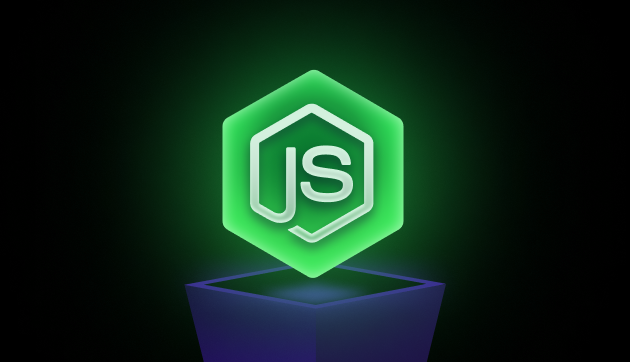
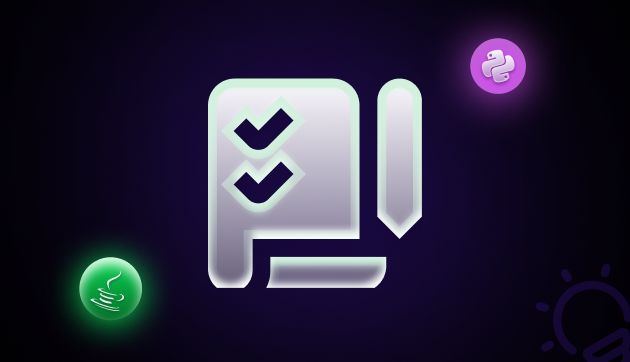
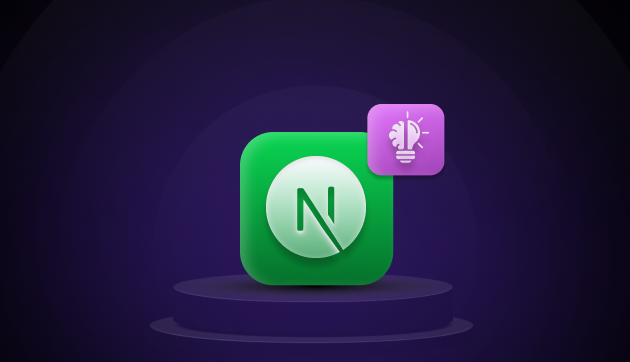
![Top 10 React Native Project Ideas [With Source Code] 18 React Native Project Ideas](https://www.guvi.in/blog/wp-content/uploads/2024/10/React_Project_Ideas.png)

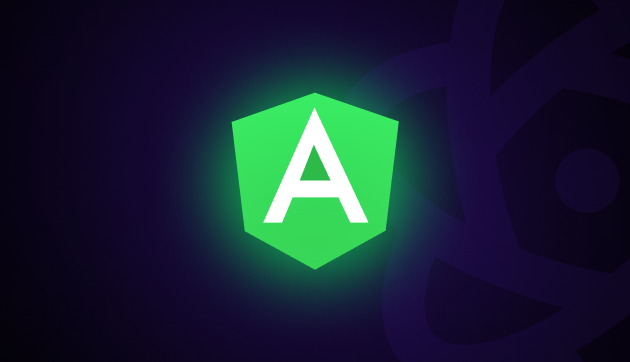
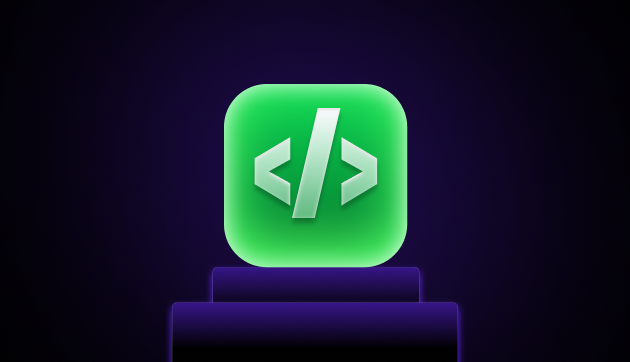

Did you enjoy this article?